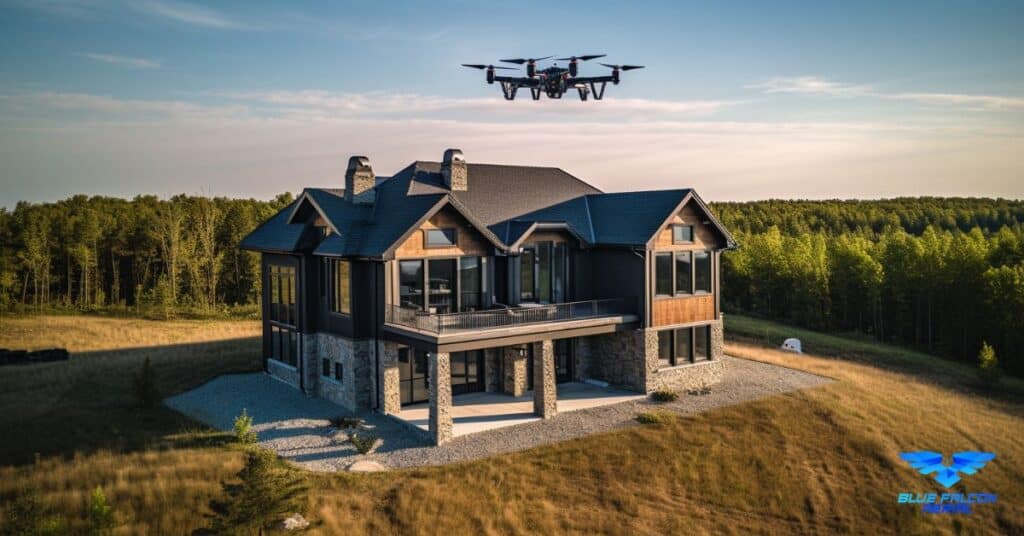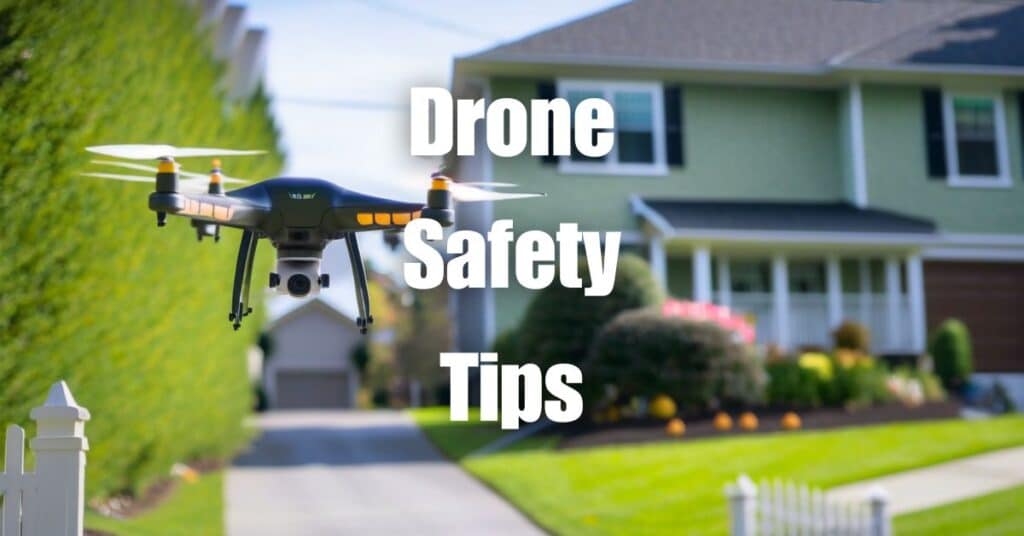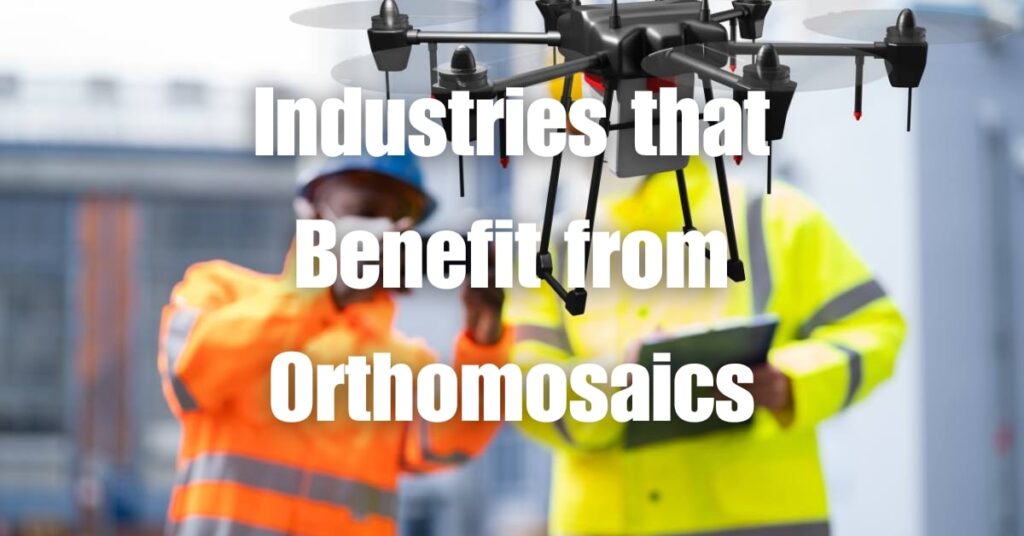Real estate professionals are always on the lookout for cutting-edge technology that can provide them with a competitive advantage. The integration of LiDAR in real estate is revolutionizing the industry, offering unparalleled insights and efficiency. In this comprehensive article, we will explore how drone LiDAR technology is changing the game for real estate professionals, discuss the myriad of applications and benefits it brings, and answer common questions like the best LiDAR scanners for real estate and the challenges associated with the technology. Get ready to discover how this innovative technology can take your real estate business to new heights!
What is LiDAR and How Does It Work?
Definition
LiDAR, which stands for Light Detection and Ranging, is a remote sensing technology that uses laser light to measure distances and create detailed, accurate three-dimensional representations of the Earth’s surface, objects, and structures. This technology has found extensive applications in various industries, including real estate, where it provides valuable insights for property management, planning, and development.
Components
A typical LiDAR system consists of three main components:
- Laser emitter: This component emits pulses of laser light that travel towards the target objects or surfaces.
- Receiver: This component detects the reflected laser light pulses that bounce back from the target.
- GPS and Inertial Measurement Unit (IMU): These components work together to accurately track the position and orientation of the LiDAR system, which is crucial for determining the precise location of the measured points.
Working Principle
LiDAR technology operates based on the principle of time-of-flight. The system emits laser pulses that travel towards a target surface or object. When the laser light hits the target, it gets reflected and travels back to the LiDAR system’s receiver. By measuring the time it takes for the laser light to travel to the target and back, the system can calculate the distance to the target.
Using the GPS and IMU data, the LiDAR system is then able to determine the precise location of each measured point in three-dimensional space, resulting in a highly accurate representation of the target area or object.
Applications of LiDAR in Real Estate
LiDAR technology has rapidly gained traction in the real estate industry due to its ability to provide detailed and accurate data on terrain, structures, and natural features. Some of the key applications of LiDAR in real estate include:
Land Surveying
Traditional land surveying methods can be time-consuming and labor-intensive. LiDAR, especially when deployed on drones, allows for faster and more accurate land surveys, enabling real estate professionals to make informed decisions about property boundaries, land development, and construction projects.
Topographic Mapping
High-resolution topographic maps are essential for various aspects of real estate, such as site selection, design, and construction. LiDAR technology generates detailed elevation data, making it possible to create accurate topographic maps that can be used for terrain analysis, slope calculations, and drainage studies.
Infrastructure Planning
LiDAR data can be used to plan and design infrastructure projects, such as roads, bridges, and utility networks. By providing accurate information about the terrain and existing structures, LiDAR helps engineers and planners identify potential challenges, optimize designs, and reduce project costs.
Environmental Analysis
LiDAR technology can be used to assess the environmental impact of real estate projects, such as identifying sensitive habitats, analyzing tree cover, and measuring the impact of development on water resources. This information is crucial for obtaining permits, ensuring compliance with environmental regulations, and promoting sustainable development.
Flood Risk Assessment
Accurate flood risk assessments are essential for property owners, developers, and insurance companies. By providing precise elevation data, LiDAR technology enables the creation of detailed floodplain maps and allows real estate professionals to assess the potential impact of flooding on properties and infrastructure.
Use of LiDAR in Real Estate
MLS LiDAR
MLS, or Multiple Listing Service, is a database used by real estate agents to share information about properties for sale. In recent years, MLS has begun integrating LiDAR data to enhance the property listings with accurate and detailed information. By incorporating LiDAR data into MLS listings, real estate professionals can provide potential buyers with valuable insights into the property’s features, topography, and surroundings, helping them make informed decisions.
Benefits for Buyers and Sellers
The use of LiDAR in real estate offers numerous benefits for both buyers and sellers. For buyers, it provides a wealth of information that can help them assess the value and suitability of a property, including its elevation, vegetation, and potential flood risks. For sellers, LiDAR data can be used to showcase the property’s unique features, such as stunning views or valuable natural resources, and can help establish accurate property boundaries.
Best LiDAR Scanners for Real Estate
When selecting a LiDAR scanner for real estate applications, several factors should be considered, including accuracy, range, weight, and cost. Based on these factors, we have compiled a list of top LiDAR scanners suitable for real estate professionals.
Factors to Consider
- Accuracy: The accuracy of a LiDAR scanner is crucial for generating reliable data. Look for scanners that offer high accuracy and resolution, ensuring that the generated data can be trusted for decision-making purposes.
- Range: The range of a LiDAR scanner determines how far it can measure. A longer range allows for larger areas to be covered, which can be beneficial for real estate projects.
- Weight: The weight of a LiDAR scanner is particularly important when using it with a drone. Lighter scanners allow for longer flight times and better maneuverability.
- Cost: The cost of a LiDAR scanner can vary significantly. Consider the trade-offs between price and features to select a scanner that meets your needs without breaking the bank.
Top Recommendations
- Leica Geosystems BLK360: The Leica BLK360 is a compact and lightweight LiDAR scanner that offers high accuracy and a range of up to 60 meters. It’s an excellent choice for real estate professionals looking for a versatile and easy-to-use scanner.
- Velodyne Puck LITE™: The Velodyne Puck LITE™ is a lightweight LiDAR sensor designed specifically for drone applications. With a range of up to 100 meters and high accuracy, it’s an ideal choice for real estate professionals utilizing drone technology.
- RIEGL miniVUX-1UAV: The RIEGL miniVUX-1UAV is a high-performance LiDAR sensor designed for integration with UAVs. With a range of up to 230 meters and excellent accuracy, this scanner is suitable for large-scale real estate projects that require detailed and precise data.
When selecting a LiDAR scanner for real estate applications, it’s essential to consider your specific needs and budget. By evaluating the factors mentioned above and exploring the top recommendations, you can find a LiDAR scanner that meets your requirements and helps you leverage this powerful technology in your real estate business.
Mapping a Room with LiDAR
LiDAR technology can also be used for mapping and scanning interiors, providing valuable information about room dimensions, layout, and architectural features. This section will guide you through the process of mapping a room with a LiDAR scanner and discuss some software options available for processing and visualizing the collected data.
Step-by-Step Process
- Select a suitable LiDAR scanner: Choose a LiDAR scanner that offers high accuracy, appropriate range, and portability for indoor use. Some LiDAR scanners are specifically designed for indoor applications, while others can be used both indoors and outdoors.
- Set up the LiDAR scanner: Position the LiDAR scanner at a suitable location within the room, ensuring that it has a clear line of sight to all walls, floors, and ceilings. Follow the manufacturer’s guidelines for setting up the scanner and configuring it for optimal performance.
- Scan the room: Start the scanning process and allow the LiDAR scanner to capture data from the entire room. Depending on the size of the room and the scanner’s capabilities, this process may take several minutes to complete. It may be necessary to move the scanner to different positions within the room to capture all areas accurately.
- Process and visualize the data: Once the scanning is complete, transfer the collected data to a computer for processing and visualization. Various software packages are available for processing LiDAR data, creating point clouds, and generating 3D models of the scanned room.
Software Options
Several software packages are available for processing and visualizing LiDAR data, including:
- CloudCompare: CloudCompare is an open-source software that allows users to process and visualize 3D point clouds generated from LiDAR scans. It supports various file formats and offers tools for filtering, editing, and analyzing the data.
- Autodesk ReCap: Autodesk ReCap is a professional-grade software for processing LiDAR data and creating detailed 3D models of scanned environments. It offers advanced tools for editing, annotating, and sharing the generated models.
- Faro Scene: Faro Scene is a comprehensive software package for processing and managing LiDAR data. It supports data from various LiDAR scanners and provides a range of tools for creating accurate 3D models, floor plans, and elevations.
How Does LiDAR Mapping Work?
LiDAR mapping is a process that involves collecting, processing, and analyzing LiDAR data to create detailed and accurate representations of the target area or object. This section will discuss the steps involved in LiDAR mapping, from data collection to processing and analysis.
Data Collection
The first step in LiDAR mapping is collecting data using a LiDAR scanner. The scanner emits laser pulses that travel towards the target surface or object and then get reflected back to the scanner’s receiver. By measuring the time it takes for the laser light to travel to the target and back, the system calculates the distance to the target.
During the data collection process, the LiDAR scanner captures thousands or even millions of individual data points, each representing a specific location in three-dimensional space. This collection of data points is known as a point cloud.
Processing and Analysis
Once the data has been collected, it needs to be processed and analyzed to create useful and meaningful representations of the target area or object. This typically involves several steps:
- Noise filtering: LiDAR data can be affected by various sources of noise, such as atmospheric conditions, scanner movement, or reflections from multiple surfaces. The first step in processing the data is to apply noise filtering techniques to remove these unwanted artifacts and improve the accuracy of the data.
Georeferencing: After noise filtering, the data needs to be georeferenced, which involves assigning geographic coordinates to each data point. This is done by combining the LiDAR data with GPS and IMU information, which provides the position and orientation of the scanner during the data collection process. Georeferencing is crucial for creating accurate and meaningful maps and models of the target area or object.
Data classification: To create useful and informative representations of the target area, the point cloud data must be classified into different categories, such as ground, vegetation, buildings, and other features. Various automated algorithms and machine learning techniques are used for point cloud classification, which helps in the extraction of meaningful information from the data.
Creation of final products: The processed and classified LiDAR data can be used to generate various types of products, such as digital elevation models (DEMs), digital surface models (DSMs), 3D models of buildings, and other features. These products can be further analyzed and visualized using specialized software and tools, providing valuable insights for various applications, including real estate.
How does LiDAR mapping work?
LiDAR mapping is a process that involves collecting, processing, and analyzing LiDAR data to create detailed and accurate representations of the target area or object. This section will discuss the steps involved in LiDAR mapping, from data collection to processing and analysis.
Data Collection
The first step in LiDAR mapping is collecting data using a LiDAR scanner. The scanner emits laser pulses that travel towards the target surface or object and then get reflected back to the scanner’s receiver. By measuring the time it takes for the laser light to travel to the target and back, the system calculates the distance to the target.
During the data collection process, the LiDAR scanner captures thousands or even millions of individual data points, each representing a specific location in three-dimensional space. This collection of data points is known as a point cloud.
Processing and Analysis
Once the data has been collected, it needs to be processed and analyzed to create useful and meaningful representations of the target area or object. This typically involves several steps:
- Noise filtering: LiDAR data can be affected by various sources of noise, such as atmospheric conditions, scanner movement, or reflections from multiple surfaces. The first step in processing the data is to apply noise filtering techniques to remove these unwanted artifacts and improve the accuracy of the data.
- Georeferencing: After noise filtering, the data needs to be georeferenced, which involves assigning geographic coordinates to each data point. This is done by combining the LiDAR data with GPS and IMU information, which provides the position and orientation of the scanner during the data collection process. Georeferencing is crucial for creating accurate and meaningful maps and models of the target area or object.
- Data classification: To create useful and informative representations of the target area, the point cloud data must be classified into different categories, such as ground, vegetation, buildings, and other features. Various automated algorithms and machine learning techniques are used for point cloud classification, which helps in the extraction of meaningful information from the data.
- Creation of final products: The processed and classified LiDAR data can be used to generate various types of products, such as digital elevation models (DEMs), digital surface models (DSMs), 3D models of buildings, and other features. These products can be further analyzed and visualized using specialized software and tools, providing valuable insights for various applications, including real estate.
Advantages of Using Drone LiDAR in Real Estate
Drone LiDAR technology offers several advantages over traditional surveying methods in the real estate industry. These advantages include speed, accuracy, cost-effectiveness, safety, and accessibility.
Speed
One of the main advantages of using drone LiDAR in real estate is its speed. Traditional surveying methods can be time-consuming, often requiring days or weeks to complete a survey. In contrast, drone LiDAR can cover large areas in a matter of hours, providing valuable data quickly and efficiently.
Accuracy
Drone LiDAR technology offers high levels of accuracy, often surpassing the capabilities of traditional surveying methods. The high-resolution data generated by drone LiDAR can provide detailed information about property boundaries, topography, and other features, helping real estate professionals make informed decisions.
Cost-effectiveness
Using drone LiDAR can be more cost-effective than traditional surveying methods, as it requires less manpower and equipment. Additionally, the speed at which drone LiDAR can collect data can result in significant cost savings, as projects can be completed more quickly.
Safety
Drone LiDAR improves safety by eliminating the need for surveyors to physically access dangerous or difficult-to-reach locations. By using drones, real estate professionals can safely collect data from areas that would otherwise be hazardous or challenging to access, such as steep slopes, unstable terrain, or heavily wooded areas.
Accessibility
Drone LiDAR technology enables real estate professionals to access remote or hard-to-reach locations that would be challenging or impossible to survey using traditional methods. With drone LiDAR, data can be collected from even the most inaccessible sites, providing valuable information that can be used for property assessment, development planning, and other real estate applications.
In summary, drone LiDAR technology offers numerous advantages over traditional surveying methods in the real estate industry. By providing accurate, detailed data quickly and cost-effectively, drone LiDAR is revolutionizing the way real estate professionals conduct surveys and make informed decisions. Furthermore, the safety and accessibility benefits of drone LiDAR ensure that valuable data can be collected from even the most challenging locations, further expanding the potential applications of this technology within the real estate sector.
Challenges and Limitations of LiDAR
While LiDAR technology offers many advantages, it also comes with some challenges and limitations that need to be considered when using it in real estate applications.
Downside of LiDAR
- Line of sight requirement: LiDAR technology requires a direct line of sight between the scanner and the target surface or object. This can be a limitation in areas with dense vegetation or complex structures, where LiDAR may struggle to accurately capture data.
- Performance in adverse weather conditions: LiDAR systems may be affected by adverse weather conditions, such as rain, fog, or snow, which can scatter the laser light and reduce the accuracy and quality of the data collected. In these situations, LiDAR may not be the best choice for data collection.
- Difficulty in capturing reflective surfaces: LiDAR can struggle to accurately capture data from reflective or shiny surfaces, such as glass, metal, or water, as the laser light can be scattered or absorbed by these materials. This can lead to gaps or inaccuracies in the collected data.
Why is LiDAR Expensive?
LiDAR technology can be expensive for several reasons:
- High initial investment: LiDAR systems, especially high-quality ones, can be costly to purchase, making the initial investment a significant barrier for some real estate professionals.
- Maintenance and calibration costs: LiDAR systems require regular maintenance and calibration to ensure accurate and reliable data collection, which can add to the overall cost of using the technology.
- Skilled personnel: Processing and analyzing LiDAR data requires skilled personnel with specialized knowledge and expertise, which can be an additional expense for real estate professionals.
Regulations
In many countries, the use of drones for LiDAR data collection is subject to various regulations, such as flight restrictions, licensing requirements, and privacy concerns. Real estate professionals using drone LiDAR technology need to be aware of and comply with these regulations to avoid legal issues and potential fines.
Data Management
Managing and storing the large volumes of data generated by LiDAR technology can be challenging, as it requires significant storage capacity and robust data management systems. Real estate professionals need to invest in the necessary infrastructure and software to effectively manage LiDAR data.
Future Prospects and Technological Advancements
As LiDAR technology continues to advance, it is expected to become more accessible, affordable, and efficient. Some anticipated advancements include:
- Smaller and more affordable LiDAR systems: Advances in sensor technology and manufacturing processes are expected to lead to smaller, more affordable LiDAR systems, making the technology more accessible to a wider range of real estate professionals.
- Improved data processing and analysis tools: The development of new algorithms and machine learning techniques will help streamline the processing and analysis of LiDAR data, making it easier for real estate professionals to extract valuable insights from the data.
- Integration with other technologies: The combination of LiDAR with other technologies, such as photogrammetry or ground-penetrating radar, can help overcome some of its limitations and enhance its capabilities, providing even more value to the real estate industry.
Case Studies of Successful Drone LiDAR Implementation
Several real estate companies and professionals have successfully implemented drone LiDAR technology, demonstrating its potential and value in the industry:
- Land development planning: In one case, a real estate developer used drone LiDAR to map a large, undeveloped property to assess its potential for residential development. The detailed topographic and vegetation data provided by the LiDAR survey helped the developer make informed decisions about site selection and development strategies, saving time and money.
- Property boundary surveys: A real estate company used drone LiDAR technology to conduct property boundary surveys for several clients, providing accurate and detailed information about property lines, encroachments, and easements. The use of drone LiDAR allowed the company to complete these surveys quickly and efficiently, resulting in significant cost savings for the clients.
- Flood risk assessment: In another example, a real estate firm utilized drone LiDAR to assess the flood risk for a property located near a river. By creating a detailed digital elevation model (DEM) of the area, the firm was able to accurately determine the potential flood risk and advise the property owner on the necessary precautions and insurance requirements.
- Historic building preservation: A real estate company specializing in the restoration and preservation of historic buildings employed drone LiDAR to create detailed 3D models of the structures. This allowed the company to identify areas of concern, such as structural weaknesses or deterioration, and plan restoration efforts accordingly.
These case studies illustrate the wide range of applications and benefits of drone LiDAR technology within the real estate industry. As the technology continues to evolve and become more accessible, it is likely to play an even more significant role in revolutionizing real estate processes and decision-making.
In summary, drone LiDAR technology has emerged as a game-changer for the real estate industry. With its wide array of applications, such as land surveying, topographic mapping, and infrastructure planning, it offers unmatched speed, accuracy, and cost-effectiveness. As the technology continues to advance and become more accessible, we can expect even more innovative uses for LiDAR in real estate.
If you found this article informative and would like to dive deeper into the world of aerial LiDAR technology, we encourage you to visit Aerial LiDAR 101: An Introduction to Its Applications and Benefits for a comprehensive guide. And remember, if you ever need professional drone services for your real estate projects, don’t hesitate to contact Blue Falcon Aerial. Our team of experts is ready to assist you with all your aerial imaging needs.




